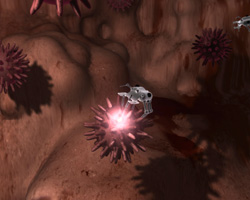Robotics to improve microsurgery
The 'Scaled telerobotics for enhanced microsurgery' (Stream) project is working to develop innovative robotic tools to enhance a surgeon's manipulation accuracy. The framework enables controllers to improve on skill and outcome. This is achieved by giving the surgeon, at any point in time, control of the desired force and velocity range of the interacting slave robot. By including a human operator, the robotic system can rapidly, swiftly and accurately carry out far more complex actions in uncertain environmental conditions. The ability to overcome barriers that humans encounter in everyday living means operations can now be performed in remote places. This takes care of the barrier in space. These operations can also be recorded for analysis and evaluation later, thus taking care of the barrier in time. Notably, the barrier of scale can be relaxed as motion and force commands by the controller can direct the slave robot in large motions and forces or towards precise motions and gentle forces. To demonstrate how this framework can relax the barrier of scale, Stream has chosen to use the microsurgical application for retinal eye surgery. The new framework enhances teleoperations by adding controller information so that uncertainty of human and environmental conditions can be dealt with in a deterministic way. This paves the way for robust, predictable and safe functioning. Stream researchers are also paying close attention to the hardware and familiarity with this hardware for safe surgery execution. Team members are realising this in part by creating a simulation environment where a surgeon can practice, experiment and personally pre-tune controllers before going in to surgery. To date, a framework for robust bilateral control has been tested and implemented on a teleoperation system with one degree of freedom (DOF), with a theoretical framework being extended towards multiple DOF systems. Also, a new four-DOF slave robot for eye surgery has been built and interfaced. Current efforts are aimed at designing a sensor to measure interaction forces with the eye's retinal surface.



